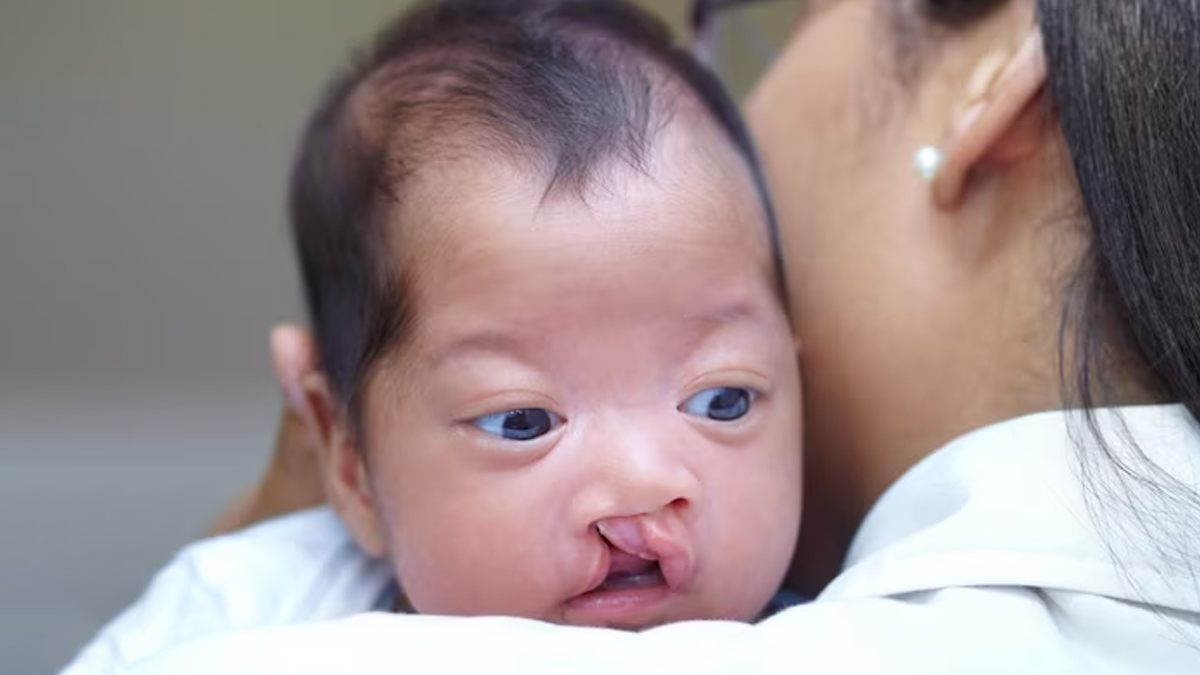
Cleft lip and palate are congenital birth defects where facial and mouth structures fail to fuse properly during pregnancy, resulting in gaps or splits in the upper lip, palate, or both. While the exact causes are unclear, genetic and environmental factors are believed to play a role. In this article, various experts shed light on this birth defect and how it can be prevented, treated, and managed.
Table of Content:-
Smile Train India organised a Roundtable Discussion on June 20, 2024, highlighting the importance of cleft awareness and focusing on children's health with a holistic approach to prevention, early diagnosis, and management. Scroll down to uncover all about the condition.

Global Impact And Efforts For Treatment
Susannah Schaefer, President and CEO, Smile Train, notes that cleft is the most common facial birth difference globally, affecting one in every 700 births. Celebrating its 25th anniversary, Smile Train has operated in India for 24 years, witnessing approximately 35,000 cases annually. This model, which empowers local medical professionals and partners with hospitals to offer free surgeries, is replicated across Africa, Asia, and Latin America.
Schaefer said, “The cleft journey varies widely, with some individuals undergoing one surgery while others require more than 25, depending on the severity. Beyond physical correction. We aim to help people build inner confidence, enabling them to thrive as leaders in their communities.”
According to the Journal of Family Medicine and Primary Care (IFPMC), a cleft is a congenital anomaly characterised by an abnormal gap in the upper lip, alveolus, or palate. Clefts affecting the lip and palate are the most common congenital anomalies in the orofacial area. They can manifest alone or in various combinations and may also coexist with other congenital conditions, notably congenital heart diseases.
Also Read: Cleft Lip & Palate: Everything You Need to Know About, As Per Expert

Challenges in Asia
Mamta Carroll, Senior Vice President and Regional Director-Asia, Smile Train, highlights three major challenges facing cleft care in Asia.
She said, “Firstly, there is a widespread lack of awareness about cleft conditions, often linked to superstitions like eclipses in countries, such as India, Nepal, and Bangladesh. Secondly, affordability remains a significant barrier, with many families unable to afford the necessary treatment for their children born with clefts. Thirdly, accessibility is hindered by infrastructural limitations in rural areas, where healthcare services for paediatric cleft surgeries are scarce.”

Early Diagnosis and Timely Intervention
Dr Krishnamurthy Bonanthaya, Maxillofacial Surgeon and Smile Train India Medical Advisory Council Member, highlights challenges in early diagnosis and intervention for cleft differences. He said, “Prenatal diagnosis remains underutilised, with only a few mothers seeking ultrasound scans before delivery. This gap underscores the need for improved prenatal counselling for pregnancies with cleft diagnoses.”
He added, “Additionally, detecting cleft palate differences poses challenges, as they may go unnoticed, especially those located at the back of the mouth. Despite post-birth examinations by paediatricians, cleft palates can still be overlooked, necessitating enhanced training for healthcare providers to ensure timely identification and intervention.”
Also Read: Procedure To Detect Birth Defects: Expert Explains Benefits And Risks Of Amniocentesis

Importance of Nutrition in Preventing Birth Defects
Dr Pooja Lodha, Foetal Medicine Expert, Association of Maharashtra Obstetrics and Gynaecological Societies (AMOGS), Pune, emphasises the multifactorial nature of cleft lip and cleft palate, indicating no single cause. However, ensuring women enter pregnancy in a healthy state with adequate nutrition is crucial for prevention. Starting folic acid after pregnancy confirmation, typically after a missed period, is less effective as foetal formation has already begun.
She highlighted, “Folic acid is most beneficial when initiated more than three months before conception, though ensuring widespread pre-pregnancy supplementation is challenging. Therefore, a practical solution involves fortifying food with folic acid, particularly in regions like India where deficiencies are prevalent.”
“This approach, akin to iodine fortification of salt, is being implemented in schools, colleges, and public health initiatives, with products, such as bread fortified with folic acid. Such measures not only prevent clefts but also neural tube defects like spina bifida, addressing widespread nutritional deficiencies effectively,” added Dr Lodha.
The Role of Psychology
Dr Saranya Jaikumar, Educational Psychologist and Independent Expert to the Government of India was born with a cleft lip into an underprivileged family from a marginalised caste in Tamil Nadu. Her parents had no formal education and were unaware of cleft lip. She recalled how villagers perceived the gap in her lip as a sign of evil. “There were people in my village who said that this was a sign of evil and that they [my parents] should kill this baby [i.e, me]. My parents fought so much to keep me alive,” she said.
Dr Jaikumar added, “People with cleft lip often lack the confidence to face the world and struggle to be productive. Sometimes, the words of counsellors, teachers, and parents aren't enough. Being surrounded by good company and friends significantly boosts their productivity and self-esteem. They need to have friends who make them feel good about themselves, regardless of others' opinions.”
[Disclaimer: This article contains information provided by an expert and is for informational purposes only. Hence, we advise you to consult your own professional if you are dealing with any health issues to avoid complications.]
Also watch this video
How we keep this article up to date:
We work with experts and keep a close eye on the latest in health and wellness. Whenever there is a new research or helpful information, we update our articles with accurate and useful advice.
Current Version
